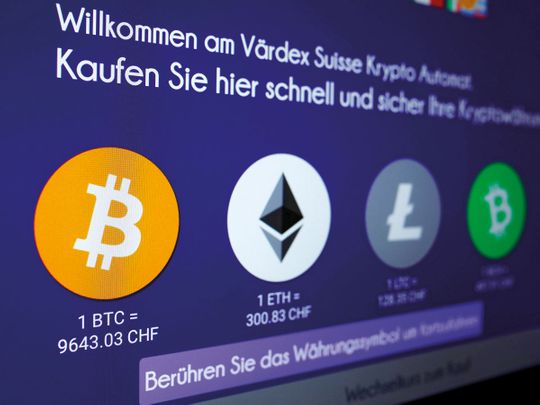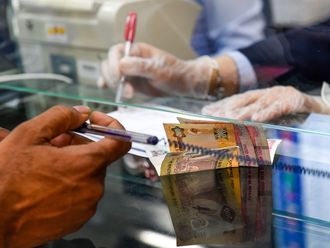
Prospects for cryptocurrency prices have improved as Chinese investors continued to buy different forms of the digital asset on local over-the-counter platforms and peer-to-peer networks.
Knee-jerk selling has given way to a steady recovery on over-the-counter platforms that Chinese crypto traders have used. One key gauge of local sentiment - the exchange rate between China’s yuan and the stablecoin Tether - fell as much as 4.4 per cent after the government’s warning earlier this month but has since recouped more than half the loss, according to crypto data platform Feixiaohao, a Chinese equivalent of CoinMarketCap.
China escalated its crackdown after a frenzied surge in Bitcoin and other tokens over the past six months heightened longstanding concerns about the potential for fraud, money laundering and trading losses by individual investors. Yet the hard-to-trace nature of transactions on local OTC platforms and peer-to-peer networks means it will be extremely difficult for authorities to enforce a wholesale ban.
That may come as a relief to global crypto enthusiasts after worries about a plunge in Chinese buying power contributed to the nearly $1 trillion selloff in digital assets from record highs in mid-May.
Before China outlawed crypto exchanges in 2017, local investors owned an estimated 7 per cent of the world’s Bitcoin and accounted for about 80 per cent of trading, according to state media. The exchange ban has made it impossible to gauge those figures today, but Chinese investors are still widely believed to have a major presence in the crypto world via domestic OTC platforms and offshore venues that they access using virtual private networks.
Domestic trades involving yuan and digital coins are difficult for China’s government to track because they typically take place in two separate steps.
The first happens on OTC platforms operated by firms including Huobi and OKEx, which allow traders to post bids and offers. Once both sides agree on a price, the buyer will use a separate payments platform - operated by their bank or a fintech company like Ant Group Co. - to send yuan to the seller. The digital coins, usually held in escrow by the OTC platform until the yuan payment clears, are then transferred to the buyer. Chinese regulators often have no way to connect one leg of the payment to the other.
Because the yuan leg of the trades take place entirely within China’s domestic financial system, the risk of large-scale capital outflows is low. But that hasn’t stopped the government from warning financial firms and individual investors to stay away from crypto.
Regulators this month reminded Chinese banks and payments firms of the requirement to identify and block suspicious transactions, and pointed out that facilitating cryptocurrency trades often violates banking rules. China’s State Council called for a clamp down on Bitcoin trading and mining, vowing to “resolutely” prevent financial risks.
The country purged the P2P industry after frauds and defaults became rampant. In its heyday the sector had more than 50 million users and $150 billion (Dh551 billion) in outstanding loans.
Peter, a Beijing tech worker, piled 20,000 yuan (Dh11,531) into cryptocurrencies three weeks ago, just in time for latest round of volatility. Within days, his portfolio grew to nearly 100,000 yuan (Dh57,659), then quickly fell back down to 14,000 yuan (Dh8,072). He echoed the carpe diem philosophy of crypto traders globally: “It doesn’t matter if it all goes to zero. But what if it brings me sudden wealth one day?








